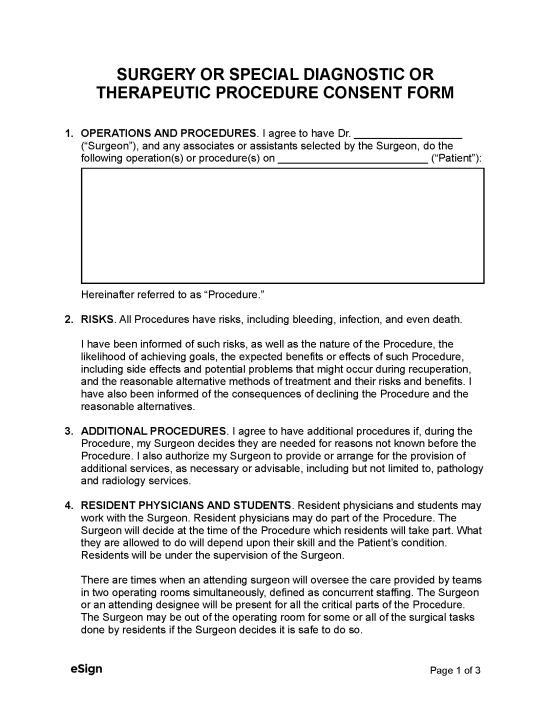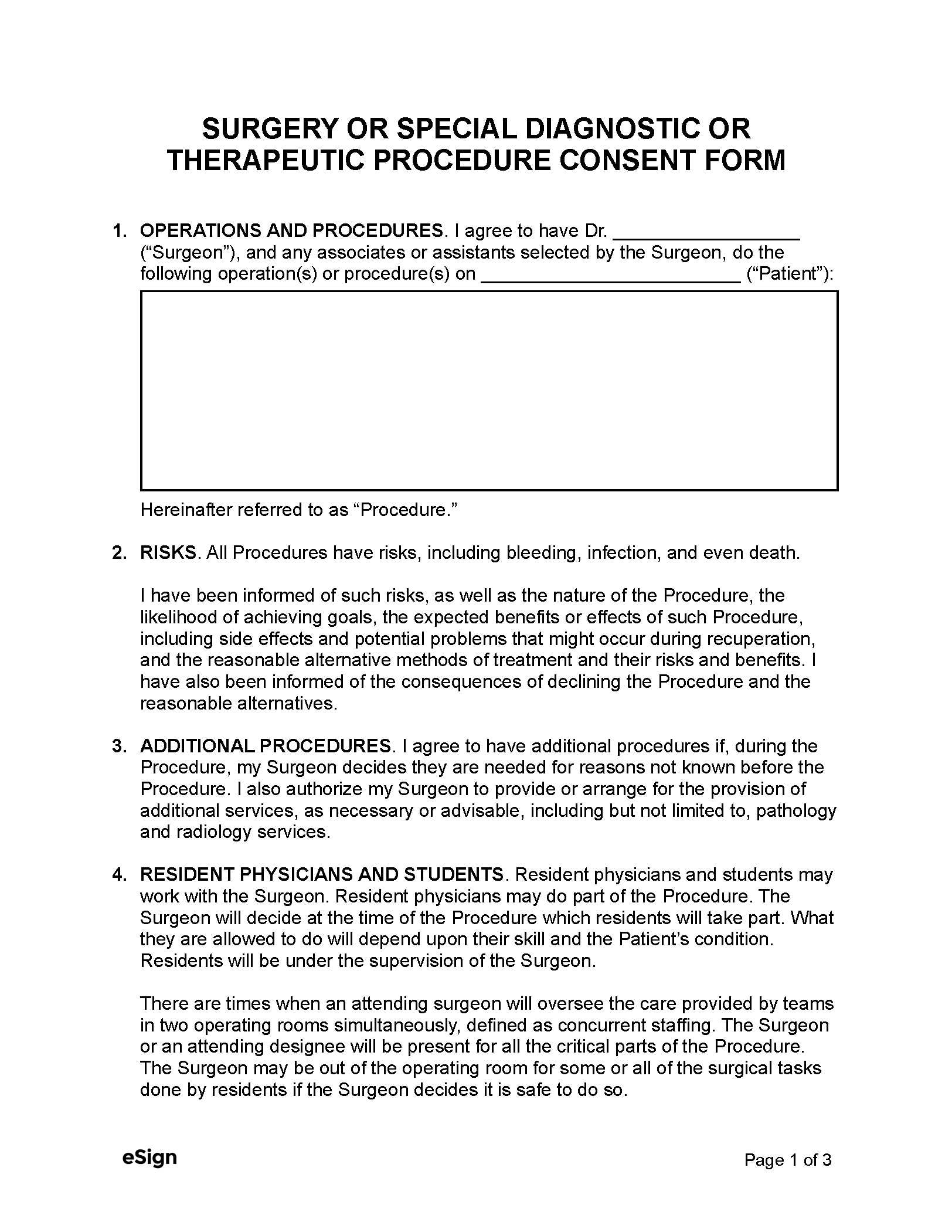Covered Procedures
The consent form is suitable for surgeries, special diagnostic procedures, and therapeutic treatments. Common procedures that require a surgery consent form include:
- Appendectomy
- Laparoscopy
- Cataract surgery
- Hip replacement
Informed Consent for Surgical Procedures
Surgeons have an ethical and legal duty to secure informed consent from patients.[2] Part of this process involves discussing the procedure with the patient and ensuring they fully understand what they’re agreeing to. The consent form plays a crucial role in fulfilling this responsibility by documenting the following:
Surgery Description
When completing the form, the surgeon must specify the exact title of the surgical procedure and explain the procedure in layman’s terms. They should also define the desired outcome, the potential risks, and any alternative procedures or surgeries (and their benefits and risks).
Additional Procedures Clause
If an unexpected issue arises during the operation, additional procedures or interventions may become necessary. The consent form contains an “additional procedures” clause to ensure the patient is aware of and acknowledges this possibility.
Research Policy
The consent form specifies that any tissue, organs, or other material removed from the patient during the operation may be used by the medical facility for research purposes. Although some exceptions apply, obtaining consent to conduct research on leftover tissue is typically required for cancer studies.[3]
Patient Acknowledgment
An acknowledgment by the patient is critical in demonstrating that the surgeon obtained informed consent. By signing the consent form, the patient verifies that they have:
- Read and understood the provided information.
- Been informed of the benefits, risks, and alternative health care options.
- Voluntarily agreed to receive the recommended surgery.

